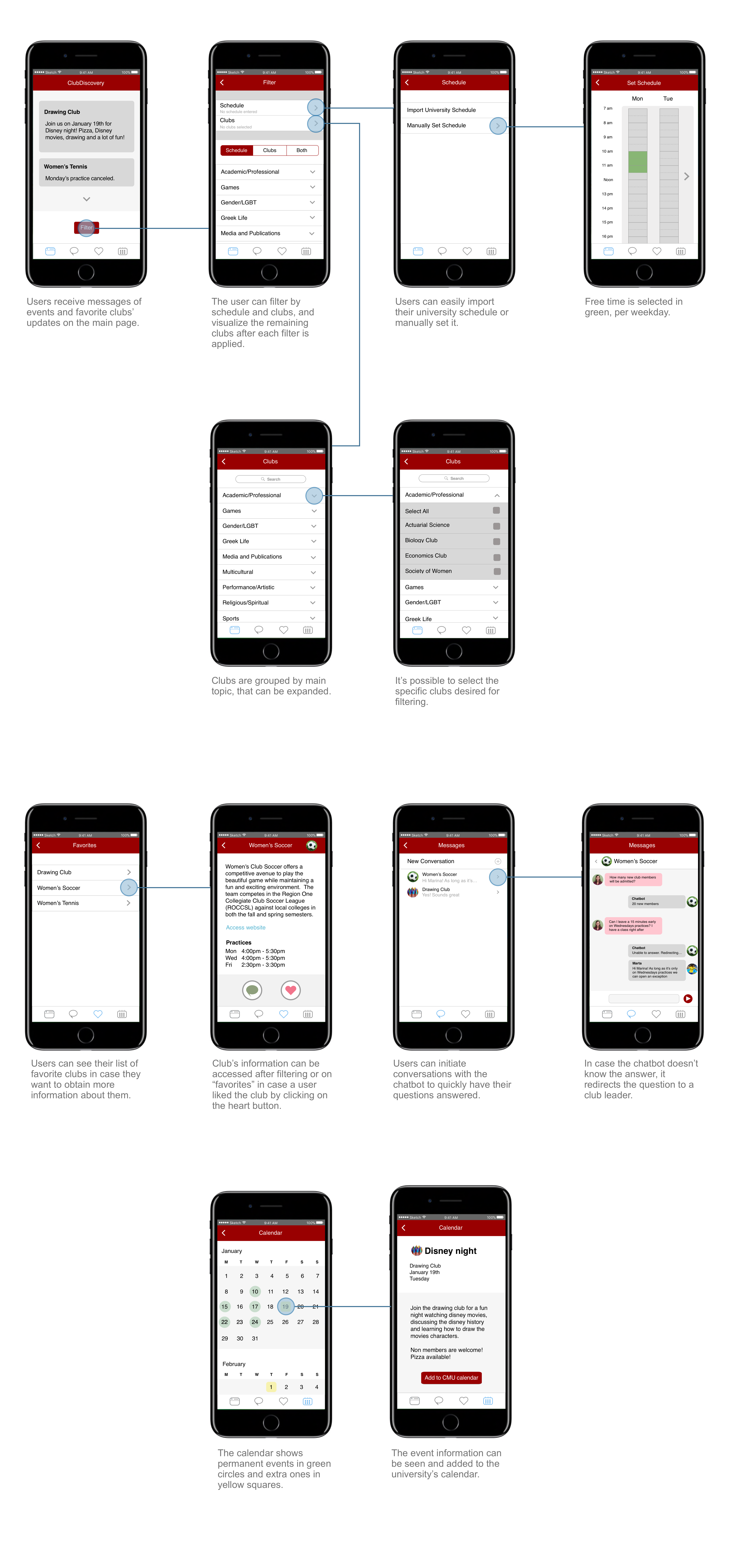Reinventing CMU's club search experience
University students highly value student clubs. Be it sports, music, politics or others, clubs are an important part of most students' college experience. Making sure that the right clubs can be easily found by students is not only interesting for students but for clubs as well, which can benefit from a higher number of students associates. In this project, I developed an app that improves the search and communication with clubs at Carnegie Mellon Univeristy.

PROJECT BREAKDOWN
Scope
7 weeks
4 person team
My roles
UX Researcher
UX Designer
Skills
Affinity Diagrams
Interviewing
Storyboarding
Speed Dating
Tools
Sketch
Paper + Pencil
ClubDiscover

ClubDiscover is an app that allows students to find the most suitable clubs based on their preferences and schedules and to easily obtain the information they need from club leaders. The app also keeps students updated all year long only with those events that fit their schedules and interests.
Research ![]()
Interview
With the goal of improving on-campus student activitiy experience, the team interviewed student club leaders and regular students. Our goal was to determine students' level of interest on clubs along with their previous experience in finding them. Moreover, we wanted to learn more about the recruitment process, on the ease to find new members and on the communication with current club members.
Sequence Flow and Cultural Models
Based on each interview, the team created sequence flows, to better understand the dynamics of club search, and cultural models, simbolyzing the entities and relations involved. That helped us to better understand the problem context and to visualize it.

Affinity Diagram
Interview notes were divided by similarities, using an affinity diagram. They were firstly grouped under blue labels that represented their essence and concept. These groups were then combined under pink labels, simbolyzing common issues, which were them grouped again into potential goals, under green labels.

After using the affinity diagram to understand the main issues for both students and clubs leaders, we consolidated the individual sequence flows and cultural models from each interviewee into a more general flows and models. Doing that gave us a more general understanding of the dynamics involving club leaders and potential members and how entities would influence them and the process of joining clubs.

Ideation ![]()
Design Ideas
The team "walked the wall" by observing individually the affinity diagram, the consolidated sequence flow and the consolidated cultural model, and thought about design ideas and breakdowns for each model. We then grouped ideas and breakdowns by similarities and created visions of the most popular ones. Based on the data obtained, visions were then analyzed by associating a "+" to parts we considered good, a "-" to attributes that were technologically unviable and a "?" to questions brought about by visions.

Iteration ![]()
Storyboards
We improved each vision by sorting out negative points and addressing previously stated questions. The team then created storyboards for each of these visions, allowing a better grasp of our proposed solutions and an easier communication of them to potential users.

Speed Dating
We conducted speed dating sessions with each storyboard. They consisted of having the users read aloud the storyboards and to analyze their needs and reactions to the proposed solution.
Students seemed excited about the idea of easily finding clubs that matched their schedules and interests and also being able to keep track of future events.
Paper prototype
Based on the feedback obtained, I designed a low-fidelity prototype to our most popular idea. That helped me understand how easily users would interact with the app and find the information they were looking for. One issue to be improved was making the event functionality more prominent within the app, since this is the main tool enviseged to have users interacting with our app all year long.

High-fidelity prototype
Next to developing a low-fidelity prototype, I then created a high-fidelity one, incorporating the critique obtained from the previous prototype.

 Marina Leao Lucena 2020
Marina Leao Lucena 2020